Sweet, Sour, Salty, Bitter—Is there MORE?
Oh yes there is. In 2002, scientists discovered a receptor on the tongue for a fifth, naturally occurring taste—UMAMI. Understanding what it is and what it can do for your cooking is important. It has specific roles.
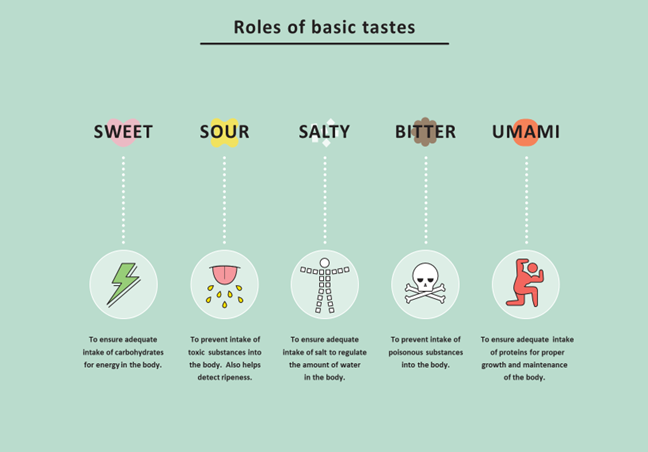
There’s an abundance of researched information online regarding this fifth taste and a few hundred books on the topic (Flavor Bombs: The Umami Ingredients that Make Taste Explode by Adam Fleischman, or At Home with Umami: Home-Cooked Recipes Unlocking the Magic of Super-Savoury Deliciousness by Laura Santtini, for instance).
But for brevity, I’m drawing from www.food52.com. Their team of pros have provided a clear explanation on umami as well as a few tips on how to draw on this taste when cooking.
First, what IS umami? “Its taste comes mainly from glutamate, which is one of the amino acids that occurs naturally in proteins. The tongue has taste cell receptors (think of them like taste buds, but just for umami) that are activated by glutamate. These taste receptors send sensory information to the brain saying, ‘Hey, this is super delicious!’ and then send a signal to the stomach telling it to prepare for digestion. We're hard-wired to like umami because it signals the presence of amino acids that are important for things like...you know, staying alive.
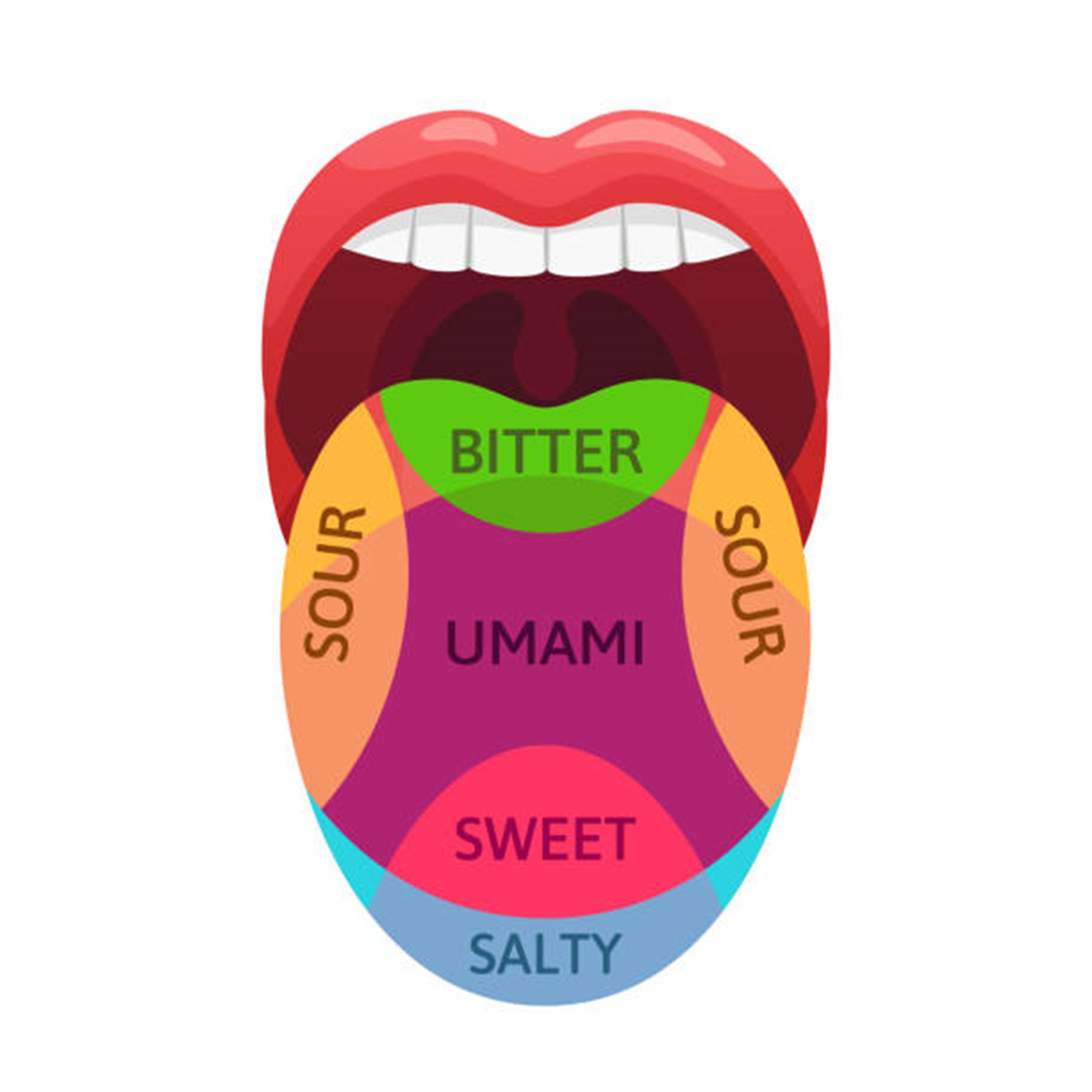
“Glutamate is present in varying levels—and the more glutamate, the more umami taste—in all kinds of foods. It has a few other effects, aside from its savory flavor. It also amplifies and rounds out other flavors, literally making foods taste better overall.
“The concept has actually been around for awhile, but only gained traction in the US relatively recently (like over the past decade). Umami, which translates to “essence of deliciousness” in Japanese, was first identified by Japanese scientist Dr. Kikunae Ikeda at Tokyo University in 1908. He was trying to figure out why his wife’s soup was so good. She told him it was its base of dashi—the Japanese soup stock made from konbu (a type of dried seaweed) and katsuobushi (bonito fish flakes)—which is used in a lot of Japanese cooking. From there, he isolated the glutamate in konbu as the source of savoriness.”
Next, what does it taste like? You can compare it to that rich, savory taste that lingers after you eat something like tomato sauce, long-cooked stews, barbecue ribs, or even ketchup. Food 52 researchers suggest doing a little experiment to really identify the taste: Take one sundried tomato and chew it 20 times before swallowing. You’ll notice sweet flavor and some acidity. But there will be a savory flavor that coats the tongue and lasts a long time. That’s umami.
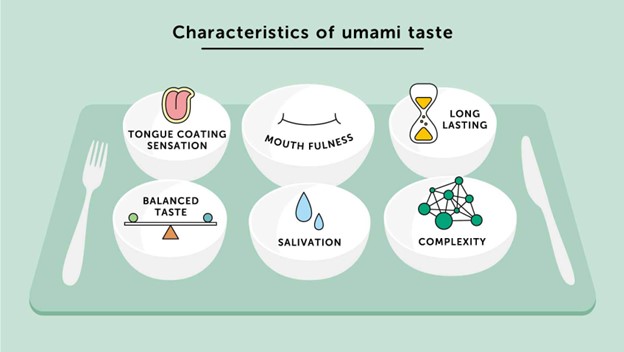
Like so many good things, the commercial world caught on and capitalized on it by creating a product we all know and many detest—MSG—monosodium glutamate. This additive is responsible for a lot of after-meal headaches. Thank goodness it appears naturally in nature, so it’s possible to enjoy the punch it adds to foods without any after-affects.
Where can you find it? A lot of familiar foods have high levels of glutamate: as mentioned above, tomatoes (in all their forms). And you’ll find it in mushrooms (fresh and dried), asparagus, Parmesan cheese, seaweeds, miso paste, anchovies, soy and fish sauces, as well as proteins (pork, beef, and shellfish).
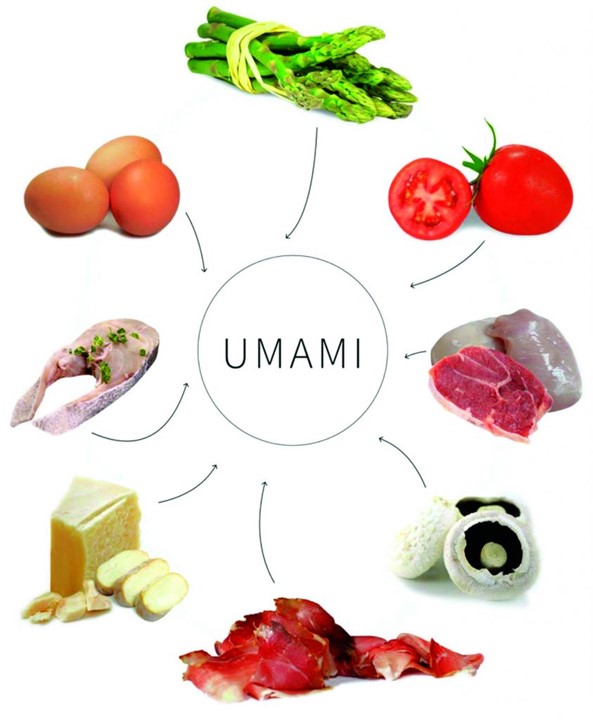
And simple ways to use this taste? Dashing soy sauce onto fried rice, adding a Parmesan rind to soup, topping your hamburger with bacon...these are all different methods of cranking up the umami factor. To a certain extent, we already (unconsciously) add umami whenever food seems like it needs something extra. That missing something is often umami.
Finally, here’s a Food 52 recipe using umami to its fullest. Instead of making the roasted vegetables on your next holiday spread heavier with cream, butter, and cheese, make them lighter and brighter with a crunchy topping that’s puckery, fresh, and all around toasty-crunchy.
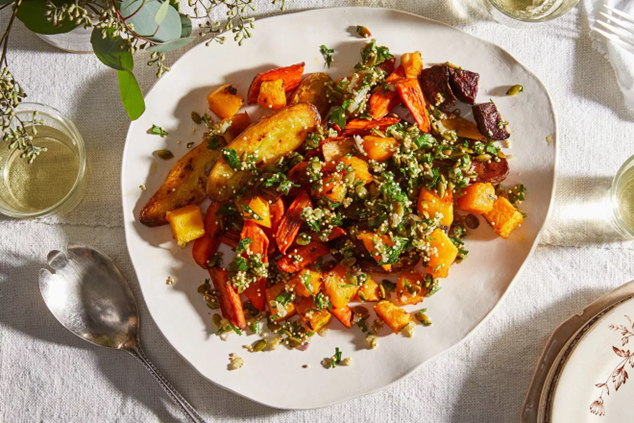

Root vegetables to roast, 1 cup each (such as carrots, parsnips, potatoes, beets, squash) scrubbed
1/4 cup dried mushrooms rehydrated in 1 tablespoon soy sauce + water (to cover them)
1/2 teaspoon salt
1/4 teaspoon pepper
2 tablespoons extra virgin olive oil plus more as needed
CRUNCHY TOPPING
2 1/2 tablespoons finely chopped shallots (about 1/2 shallot)
2 tablespoons lemon zest (from about 1 lemon)
1/4 cup pepitas (dried pumpkin seeds)
2 tablespoons red quinoa (or millet or sesame seeds)
1/2 cup finely choppedd fresh parsley
1/2 teaspoon olive oil
salt to taste
pepper to taste
Directions:
Add Recipe to Cook'n
blog comments powered by Disqus

There’s an abundance of researched information online regarding this fifth taste and a few hundred books on the topic (Flavor Bombs: The Umami Ingredients that Make Taste Explode by Adam Fleischman, or At Home with Umami: Home-Cooked Recipes Unlocking the Magic of Super-Savoury Deliciousness by Laura Santtini, for instance).
But for brevity, I’m drawing from www.food52.com. Their team of pros have provided a clear explanation on umami as well as a few tips on how to draw on this taste when cooking.
First, what IS umami? “Its taste comes mainly from glutamate, which is one of the amino acids that occurs naturally in proteins. The tongue has taste cell receptors (think of them like taste buds, but just for umami) that are activated by glutamate. These taste receptors send sensory information to the brain saying, ‘Hey, this is super delicious!’ and then send a signal to the stomach telling it to prepare for digestion. We're hard-wired to like umami because it signals the presence of amino acids that are important for things like...you know, staying alive.

“Glutamate is present in varying levels—and the more glutamate, the more umami taste—in all kinds of foods. It has a few other effects, aside from its savory flavor. It also amplifies and rounds out other flavors, literally making foods taste better overall.
“The concept has actually been around for awhile, but only gained traction in the US relatively recently (like over the past decade). Umami, which translates to “essence of deliciousness” in Japanese, was first identified by Japanese scientist Dr. Kikunae Ikeda at Tokyo University in 1908. He was trying to figure out why his wife’s soup was so good. She told him it was its base of dashi—the Japanese soup stock made from konbu (a type of dried seaweed) and katsuobushi (bonito fish flakes)—which is used in a lot of Japanese cooking. From there, he isolated the glutamate in konbu as the source of savoriness.”
Next, what does it taste like? You can compare it to that rich, savory taste that lingers after you eat something like tomato sauce, long-cooked stews, barbecue ribs, or even ketchup. Food 52 researchers suggest doing a little experiment to really identify the taste: Take one sundried tomato and chew it 20 times before swallowing. You’ll notice sweet flavor and some acidity. But there will be a savory flavor that coats the tongue and lasts a long time. That’s umami.

Like so many good things, the commercial world caught on and capitalized on it by creating a product we all know and many detest—MSG—monosodium glutamate. This additive is responsible for a lot of after-meal headaches. Thank goodness it appears naturally in nature, so it’s possible to enjoy the punch it adds to foods without any after-affects.
Where can you find it? A lot of familiar foods have high levels of glutamate: as mentioned above, tomatoes (in all their forms). And you’ll find it in mushrooms (fresh and dried), asparagus, Parmesan cheese, seaweeds, miso paste, anchovies, soy and fish sauces, as well as proteins (pork, beef, and shellfish).

And simple ways to use this taste? Dashing soy sauce onto fried rice, adding a Parmesan rind to soup, topping your hamburger with bacon...these are all different methods of cranking up the umami factor. To a certain extent, we already (unconsciously) add umami whenever food seems like it needs something extra. That missing something is often umami.
Finally, here’s a Food 52 recipe using umami to its fullest. Instead of making the roasted vegetables on your next holiday spread heavier with cream, butter, and cheese, make them lighter and brighter with a crunchy topping that’s puckery, fresh, and all around toasty-crunchy.

ROASTED VEGETABLES with BRIGHT and CRUNCHY HERB TOPPING

Serving size: 6
Calories per serving: 49
Ingredients:
Calories per serving: 49
Root vegetables to roast, 1 cup each (such as carrots, parsnips, potatoes, beets, squash) scrubbed
1/4 cup dried mushrooms rehydrated in 1 tablespoon soy sauce + water (to cover them)
1/2 teaspoon salt
1/4 teaspoon pepper
2 tablespoons extra virgin olive oil plus more as needed
CRUNCHY TOPPING
2 1/2 tablespoons finely chopped shallots (about 1/2 shallot)
2 tablespoons lemon zest (from about 1 lemon)
1/4 cup pepitas (dried pumpkin seeds)
2 tablespoons red quinoa (or millet or sesame seeds)
1/2 cup finely choppedd fresh parsley
1/2 teaspoon olive oil
salt to taste
pepper to taste
Directions:
Drain mushrooms; add them to vegetables. Toss prepared mushrooms and vegetables with the salt, pepper, and enough olive oil to coat. Spread out on a baking sheet and roast until fork-tender, about 20 to 60 minutes, depending on the vegetable. (If you're roasting red beets, roast them on their own section of the pan or on a separate pan as they will bleed into their neighbors.)
Meanwhile, make CRUNCHY TOPPING. Stir together the shallot and lemon zest, which will allow the shallot to lightly pickle. While the shallots are sitting, toast the pepitas in a dry pan, then add to the shallots. Toast the quinoa in the same dry pan until they start to pop, then stir into the shallots, as well. Add the parsley, followed by 1/2 teaspoon olive oil, and stir to combine. Season to taste with olive oil, pepper, and lemon juice.
To serve, put the vegetables on a large platter then sprinkle with the crunchy topping. Serve warm or at room temperature.
Meanwhile, make CRUNCHY TOPPING. Stir together the shallot and lemon zest, which will allow the shallot to lightly pickle. While the shallots are sitting, toast the pepitas in a dry pan, then add to the shallots. Toast the quinoa in the same dry pan until they start to pop, then stir into the shallots, as well. Add the parsley, followed by 1/2 teaspoon olive oil, and stir to combine. Season to taste with olive oil, pepper, and lemon juice.
To serve, put the vegetables on a large platter then sprinkle with the crunchy topping. Serve warm or at room temperature.
Recipe formatted with the Cook'n Recipe Software from DVO Enterprises.
 Alice Osborne
Alice Osborne
Weekly Newsletter Contributor since 2006
Email the author! alice@dvo.com
Sources:
- www.ajinomoto.com
- www.istock.com
- www.highqualityorganics.com
- www.food52.com
